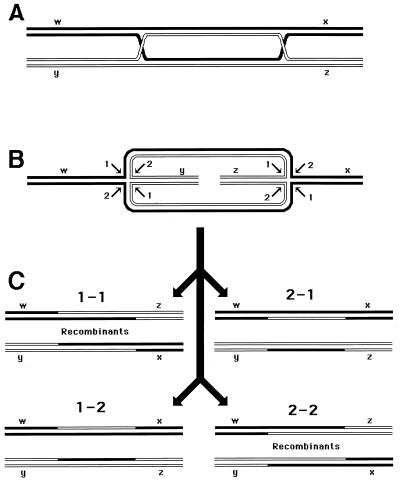FIG. 2.
The four ways to resolve a joint molecule with a double junction. Lowercase letters w, x, y, and z designate unique sites which serve as markers on the homologous chromosomes. A junction is resolved by two symmetrical single-strand cuts (small black arrows in panel B) across each other. Each such diagonal pair of cuts is numbered either 1 or 2 for each junction. If junctions freely isomerize and are resolved independently of each other, four outcomes of the resolution are expected. In two of the outcomes, the chromosome arms will be exchanged, resulting in recombinant chromosomes. (A) A joint molecule with two junctions as shown in Fig. 1B. (B) The same joint molecule isomerized to show both junctions in the open planar configuration (498). (C) The four resolution outcomes, numbered according to the resolution options realized at the left and the right junctions.

